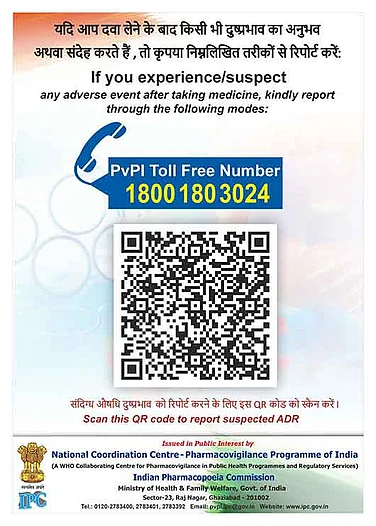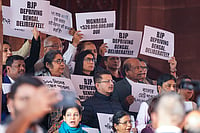For the first time ever, the World Health Organization (WHO) has estimated global e-cigarette use in its latest report, and the figures are deeply concerning. Over 100 million people worldwide are now using e-cigarettes, with at least 86 million users — predominantly adults in high-income countries.
Most concerning is the estimated 15 million children aged 13 to 15 who are already vaping. In countries where data is available, children are on average nine times more likely to vape than adults.
“This is not just a public health issue — it is a generational crisis in the making,” the report “WHO report on the global tobacco epidemic, 2025: warning about the dangers of tobacco,” noted adding that the tobacco industry is aggressively countering decades of global tobacco control progress by pushing a new generation of nicotine products.
Despite a significant decline in tobacco use — from 1.38 billion users in 2000 to 1.2 billion in 2024 — tobacco continues to claim millions of lives annually. The WHO acknowledged that since 2010, the number of users has dropped by 120 million, a relative decline of 27%. However, the growing popularity of e-cigarettes threatens to undo these gains.
“Millions of people are stopping, or not taking up, tobacco use thanks to tobacco control efforts by countries around the world,” said Dr. Tedros Adhanom Ghebreyesus, WHO Director-General. “However, in response to this strong progress, the tobacco industry is fighting back with new nicotine products, aggressively targeting young people. Governments must act faster and stronger in implementing proven tobacco control policies.”
The WHO report criticises the tobacco industry's introduction of e-cigarettes, nicotine pouches, and heated tobacco products as part of a broader strategy to maintain addiction. These products, often marketed under the guise of harm reduction, are creating a new wave of nicotine dependency, particularly among the youth.
“The tobacco industry is introducing an incessant chain of new products and technologies for its aim to market tobacco addiction with not just cigarettes but also e-cigarettes, nicotine pouches, heated tobacco products among others, which all harm people’s health, and more worryingly the health of new generations, youth and adolescents.
E-cigarettes are fuelling a new wave of nicotine addiction,” said Etienne Krug, WHO Director of Health Determinants, Promotion and Prevention Department. “They are marketed as harm reduction but, in reality, are hooking kids on nicotine earlier and risk undermining decades of progress.”
Experts in India concurred with the report’s observation that how the tobacco industry is choking the youth and adolescents. Despite a legal ban under the Prohibition of Electronic Cigarettes Act (PECA), 2019, e-cigarettes and similar products remain widely available in India, particularly through online platforms. This was highlighted by experts from education and health sectors at a recent conference organised by Mothers Against Vaping (MAV), calling for urgent and coordinated intervention.
“We already have a law, but stricter enforcement is needed,” said A. Srija, Economic Adviser, Department of School Education & Literacy (DoSEL), Ministry of Education. “A recent study revealed that 35.6% of online sellers are still flouting the ban. Despite TOFEI (Tobacco-Free Educational Institutions) guidelines, teachers report that students easily access these products online.”
Srija emphasised the need for school-based protocols to help teachers handle situations compassionately. “What should a teacher do if they find a vape in a student’s bag? We urgently need intervention protocols that don’t isolate the child,” she said.
Several school leaders echoed the call for structured, compassionate approaches in schools.
“We’re not even seeing the tip of the iceberg,” according to Rashmi Malhotra, Headmistress, Delhi Public School, R.K. Puram. “Children are experimenting with herbal-labelled vapes easily bought online. Peer pressure, misinformation, and glamorisation on social media mislead them into thinking it’s safe.”
“Even high-achieving girls from modest backgrounds are using vapes. If the 'smart' girl does it, others think it must be okay,” noted Jyoti Singh, Principal, Lady Irwin Senior Secondary School, Delhi.
“In most cases, it is schools that first notice behavioural changes,” said Pramod Sharma, Vice President, Genesis Global School. “A drop in performance, low attention span, or sudden withdrawal from activities are early signs. Parental denial is common initially, but communication helps build trust.”
Shikha Sehgal, Head of Counselling, Heritage International Xperiential School, stressed the importance of year-round mental wellness planning. “Tools like wellness surveys and attendance tracking help identify at-risk students. Regular check-ins by counsellors are vital, especially in higher grades,” she said.
“Vapes and nicotine pouches are not safe alternatives,” warned Dr. Fousin M Latheef, Associate Consultant, Chest Medicine, Sir Ganga Ram Hospital, Delhi. “They release harmful substances like formaldehyde and heavy metals and can cause irreversible lung damage, including EVALI and ‘popcorn lung.’ These devices are also being used to deliver marijuana oils and synthetic drugs.”
Arun Mukherjee, Principal (IB), Genesis Global School, called for a holistic school policy grounded in Positive Behaviour Learning (PBL). “The goal should be transformation, not punishment. We must also educate parents — often, their unintentional pressure pushes children toward these coping mechanisms. Listening more and judging less is the need of the hour.”

























